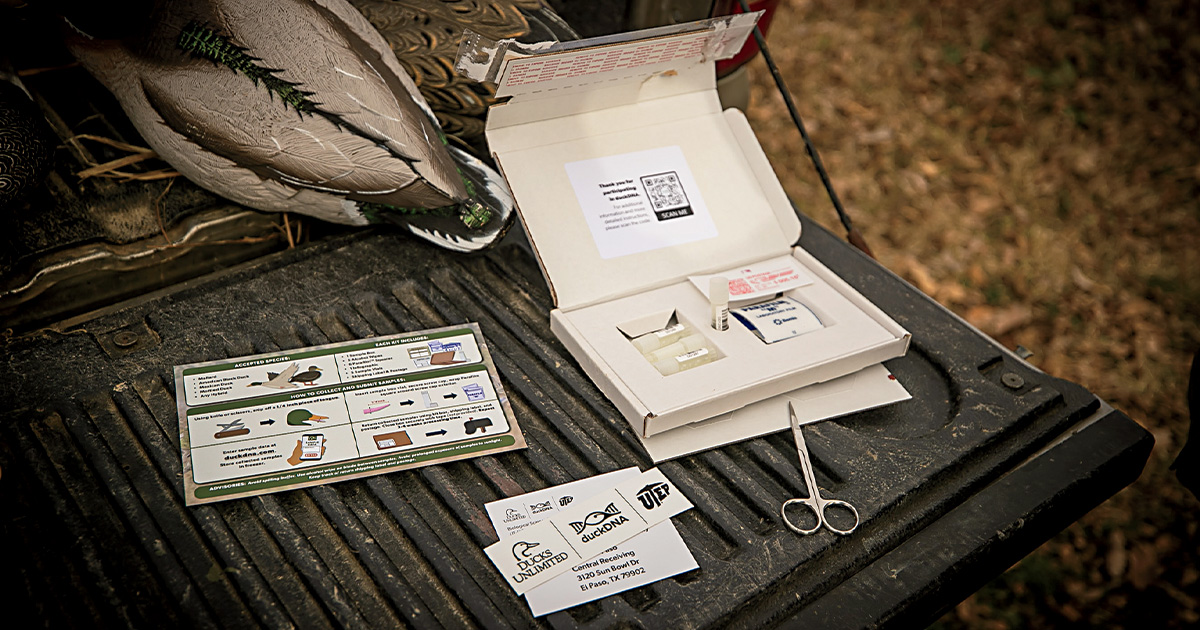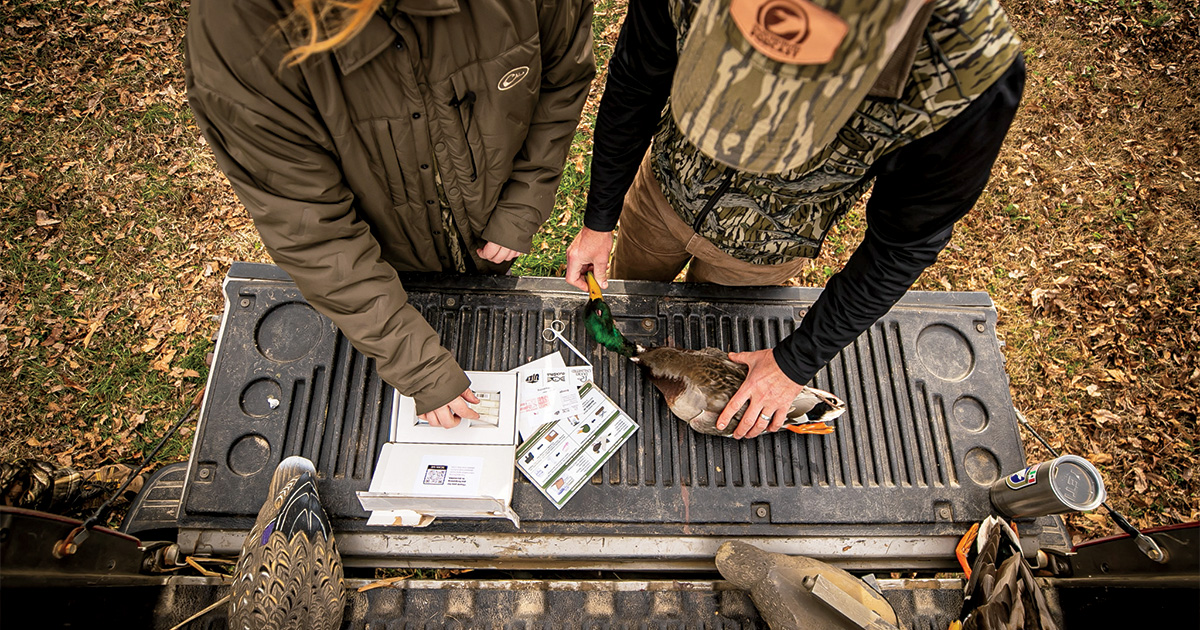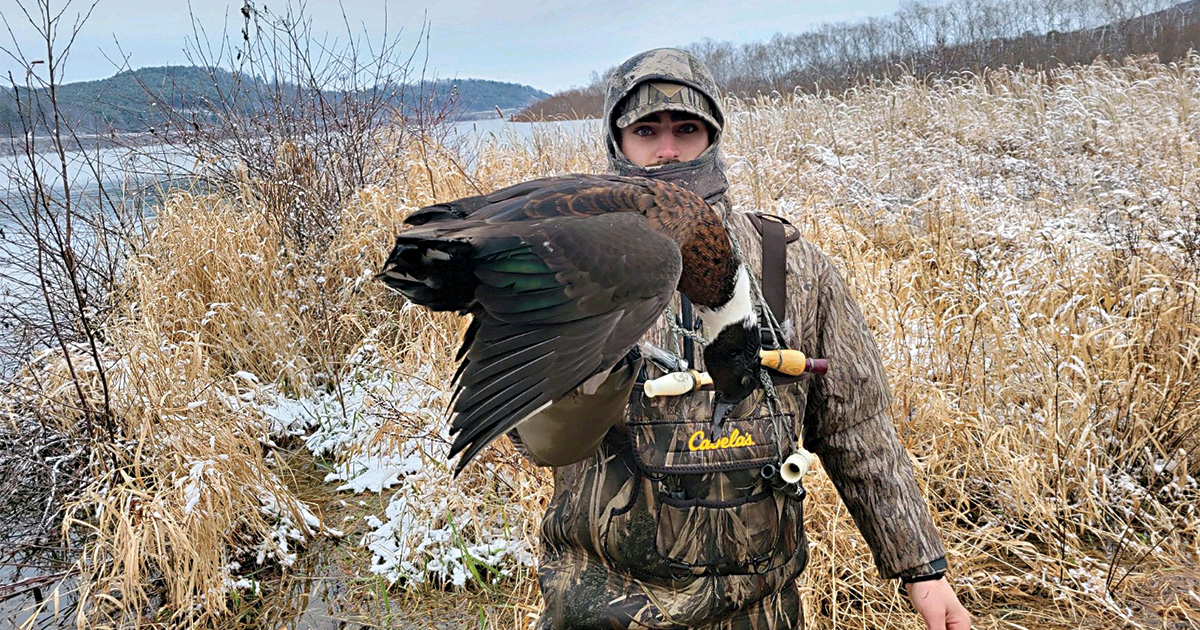Understanding Waterfowl: Disentangling Duck DNA
A new research project is harnessing the power of citizen science to solve important questions about waterfowl genetics
A new research project is harnessing the power of citizen science to solve important questions about waterfowl genetics
By Ashley Tunstall; Vergie Musni; Mike Brasher, PhD; and Philip Lavretsky, PhD

Hunters who participate in the duckDNA project receive a kit containing instructions and supplies for recording and preserving tissue samples.
Conservation genetics could be fairly described as a complex field of study, and you might be surprised to learn that genetics research has a long history in our understanding of waterfowl species and populations. At a basic level, genetics is vital for answering questions about how closely related two or more species are or whether there is sufficient evidence to identify certain groups of animals as unique species.
In recent decades, genetics has played a crucial role in documenting hybridization in waterfowl and determining whether it threatens the genetic existence of a particular species. The best-known examples include hybridization between mallards and their close relatives, such as American black ducks and mottled ducks. In related work, genetic analyses provided evidence to justify the recent classification of the Mexican duck as a separate species. And one of the more noteworthy recent discoveries in waterfowl science came from the field of conservation genetics, as researchers documented the existence of game-farm mallard genes among what were previously believed to be populations of entirely wild mallards. Scientists are now looking further into this issue to determine whether game-farm genes could have detrimental consequences for wild mallards.
In other research, scientists are working to determine the role that genetics plays in defining physiological, morphological, and behavioral traits in waterfowl. Genes associated with migration tendencies, foraging behavior, and nesting behavior have all been identified in waterfowl and other bird species. Preliminary findings from ongoing studies of Great Lakes mallards suggest direct links between the genetic makeup of females and their propensity to migrate and nest, with birds carrying substantial amounts of game-farm genetics showing lower migration tendencies and stronger association with urban areas. Additional research is needed to determine the scale of hybridization between wild and game-farm mallards and whether it is becoming more prevalent among wild populations.
As waterfowl scientists investigate these and other questions, the pace of learning is often limited by logistical and financial constraints inherent to field-based research. However, an emerging trend in wildlife research is to leverage the power of modern information technology and the scientific curiosity of outdoor enthusiasts to increase and expand data collection. Notable examples include the iNaturalist and eBird web applications, both of which enlist outdoor enthusiasts to provide data on the species, numbers, and locations of birds and other wildlife they observe in the field.

With help from waterfowl hunters, the duckDNA project will provide a wealth of information to researchers about waterfowl genetics. Among the most important questions being examined is the prevalence of game-farm DNA in wild mallard populations and if the presence of these domestic genes in mallards influences migration and breeding behaviors.
Waterfowl hunters have served as citizen scientists for decades by reporting recoveries of banded birds and participating in harvest and hunter surveys. Data collected through these efforts help managers make better decisions and ensure that waterfowl populations remain healthy. Waterfowlers now have a chance to continue their contributions to science through a revolutionary project that is collecting genetic information from harvested ducks across the United States. The “duckDNA” project was born from a collaboration between scientists at Ducks Unlimited and Dr. Philip Lavretsky, a professor and waterfowl geneticist at the University of Texas at El Paso (UTEP). While earlier research studies have worked with hunters to collect genetic material for wildlife species at local or regional scales, this is the first project to be implemented at a national scale for waterfowl.
The duckDNA project relies on waterfowlers to submit tissue samples from harvested ducks for genetic analysis. Thanks to the generosity of DU donors, the duckDNA team brought the project from concept to reality in mere months and at no cost to participants. Launched in October 2023, the project had a first-year goal of collecting and processing 1,500 samples from 300 hunters (five samples per hunter). Outreach through multiple communications platforms informed waterfowlers about the project and encouraged their participation. The response was impressive—4,200 applicants from 49 states responded, and 300 hunters were chosen to participate. There was a high level of interest from those selected for the program, but delivery challenges and a lack of hunting success in some areas resulted in only 707 samples being submitted. Nevertheless, implementation of the project was deemed a success, paving the way for future work.
What do waterfowl hunters who wish to participate in the duckDNA project need to do? The process begins by visiting the project website at duckDNA.com and filling out an application. Because a primary goal of the study is to collect samples from hunters across the United States, applicants are asked to report where they hunt most often. This information is used in the selection process to ensure representation from hunters in as many states as possible. Those who are selected to participate are then asked to create an official account on the duckDNA website, and they receive a DNA sampling kit in the mail.
Each kit provides easy-to-follow instructions and supplies. Hunters need only to provide a knife or pair of scissors to collect tissue samples—preferably a 1/4-inch piece of each bird’s tongue. Next, hunters answer a few questions about harvested birds on their duckDNA account before mailing the samples to UTEP for processing.
Regardless of the results, the duckDNA project makes it possible for hunters to learn more about their harvest. After each sample is processed, the participating hunter receives a “certificate of pedigree,” which is accessible through his or her duckDNA account. The certificate provides an overview of the bird’s sex and ancestry, including whether or not it was a hybrid.
In addition to recruiting new hunter-scientists, duckDNA is adding to a growing molecular database for understanding waterfowl hybridization, migration, and demographics at genetic levels. Whether new discoveries will translate into actionable management decisions at the population level remains to be seen. As Lavretksy notes, “We won’t know until we know, and we can’t know without data. The duckDNA project makes it possible to collect data and ask questions at scales unimaginable just a few years ago.”
Thanks to high interest, the duckDNA team is mobilizing for another season, with refinements already under way. If you would like to participate, visit duckDNA.com to learn more about the project and click “Apply Today” to be among the first to be notified when the application period opens for the 2024–25 season.
Ashley Tunstall is a DU biologist in southern Oregon. Dr. Mike Brasher is DU’s senior waterfowl scientist and is based at DU national headquarters in Memphis. Dr. Philip Lavretsky is an associate professor of biological science and Vergie Musni is a graduate researcher at the University of Texas at El Paso.

Courtesy of Jerry Crispino
Besides collecting data from officially selected participants, the duckDNA team also provides an additional service to the waterfowl hunting community—genetic identification of hybrids. This past hunting season, waterfowlers who harvested what they suspected to be hybrid ducks were able to get a definitive answer simply by contacting researchers at duckDNA@ducks.org and requesting a hybrid sampling kit. This service will be offered with limited availability during the 2024–25 season, once again giving hunters the opportunity to settle debates about the origins of odd-looking ducks.
Ducks Unlimited uses cookies to enhance your browsing experience, optimize site functionality, analyze traffic, and deliver personalized advertising through third parties. By continuing to use this site, you agree to our use of cookies. View Privacy Policy